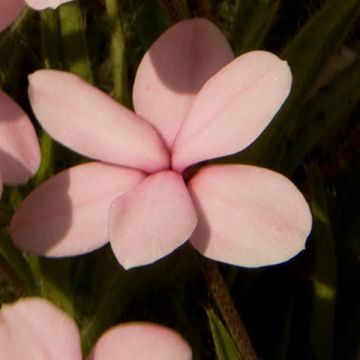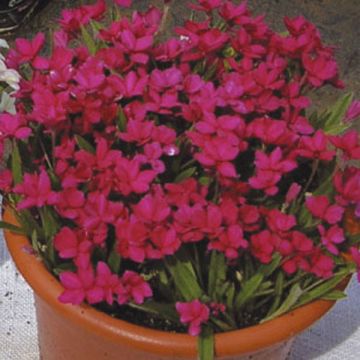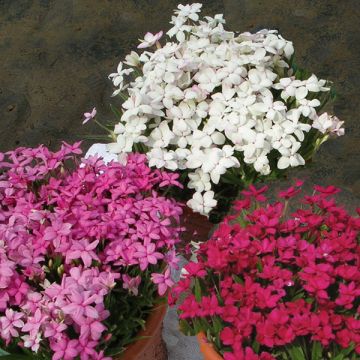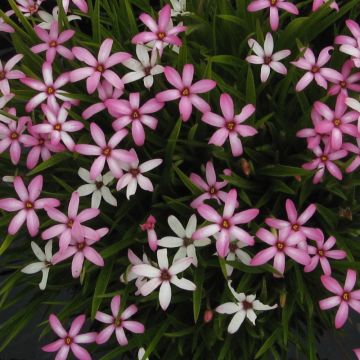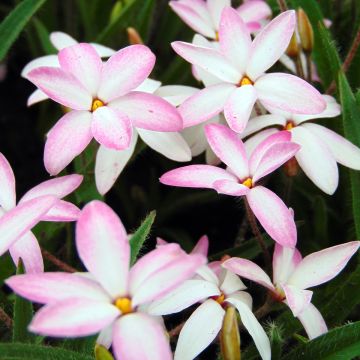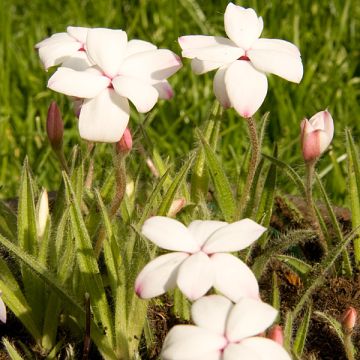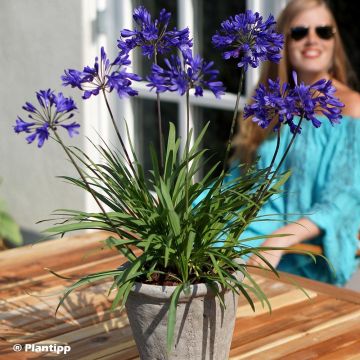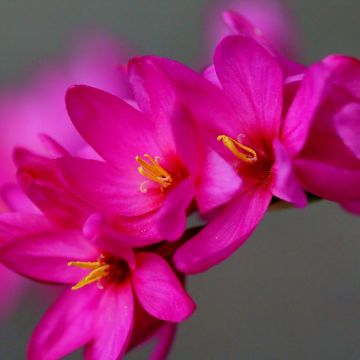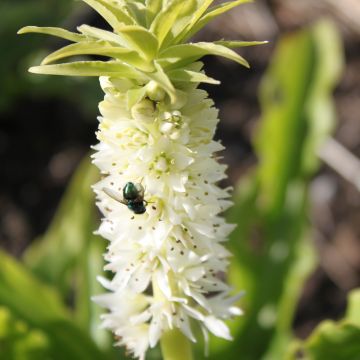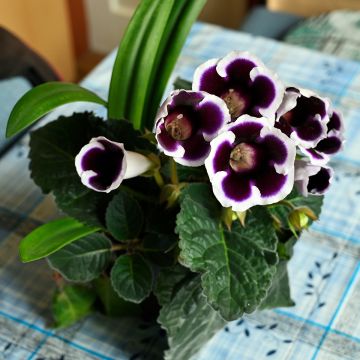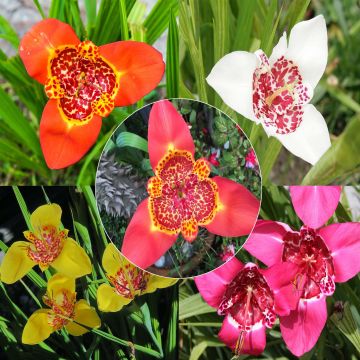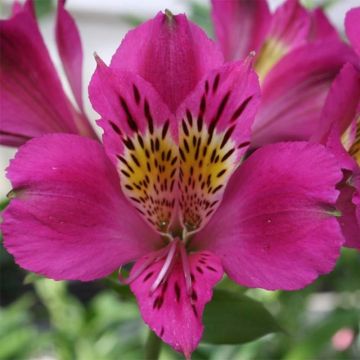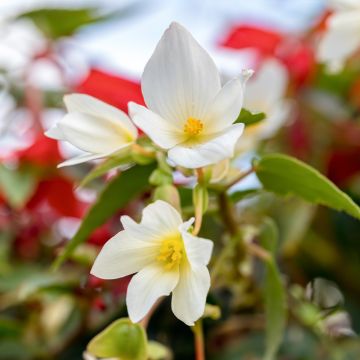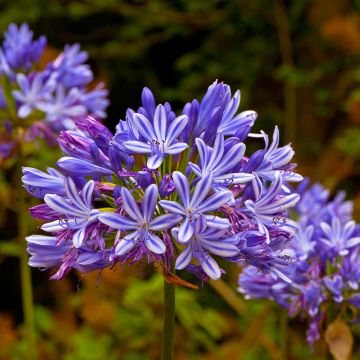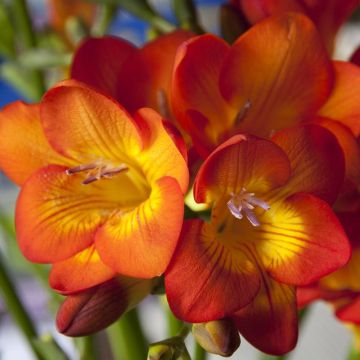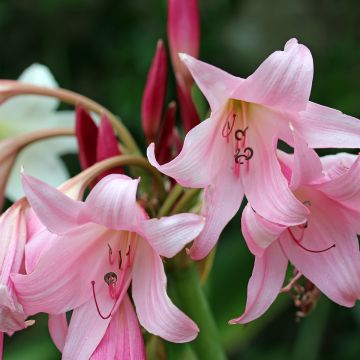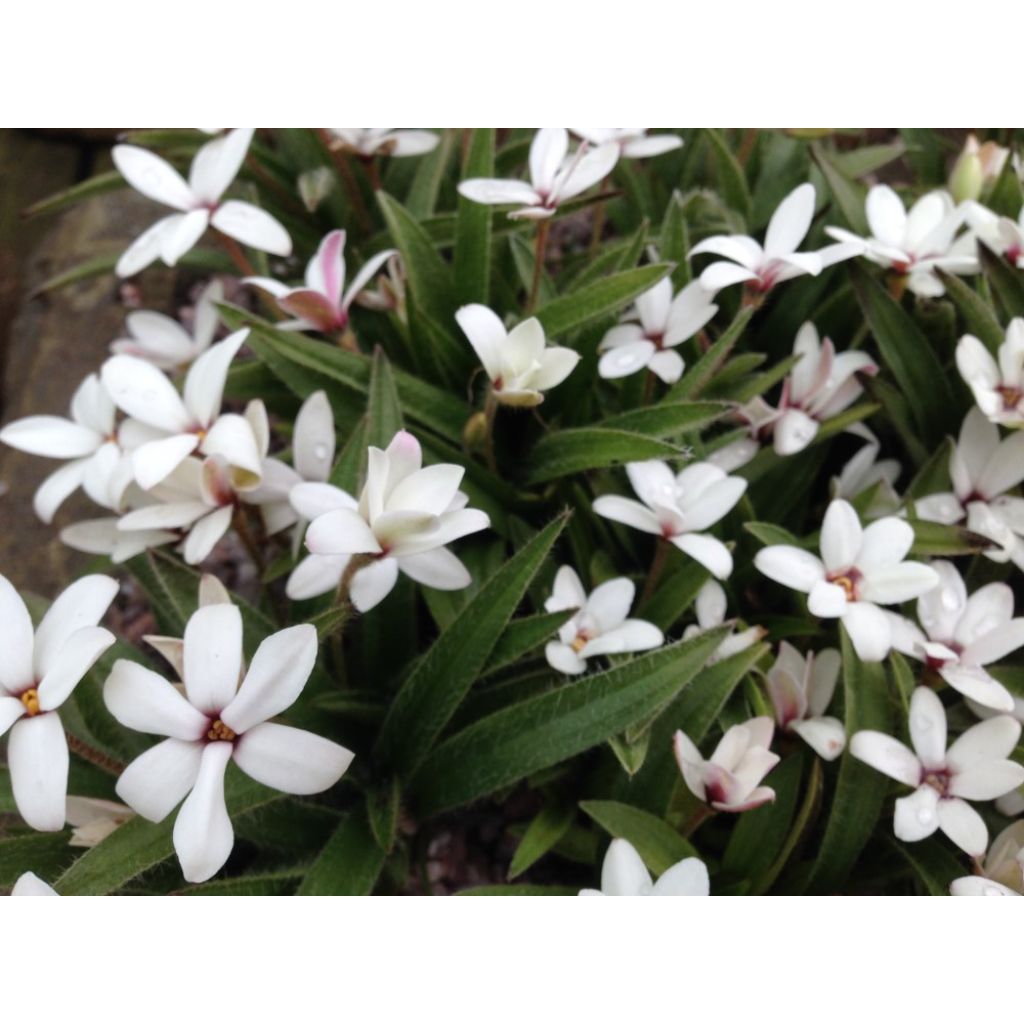

Rhodoxis Summer Stars Peppermint
Rhodoxis Summer Stars Peppermint
(x) Rhodoxis Summer Stars Peppermint
This item cannot be shipped to the selected country
Delivery charge from €5.90
More information
Schedule delivery date,
and select date in basket
This plant carries a 6 months recovery warranty
More information
We guarantee the quality of our plants for a full growing cycle, and will replace at our expense any plant that fails to recover under normal climatic and planting conditions.
From €5.90 for pickup delivery and €6.90 for home delivery
Express home delivery from €8.90.
Does this plant fit my garden?
Set up your Plantfit profile →
Description
The x Rhodoxis Summer Stars Peppermint is a creeping hybrid variety with slightly greyish green leaves that produces numerous small white flowers with a red throat. Its flowering period is very long throughout the beautiful season, as long as the soil does not dry out too much. Not very hardy, it will decorate rockeries in regions where the winter is mild. It will also add a touch of exoticism to the terrace.
This cultivar Summer Stars Peppermint (Summer Stars Series) is the result of hybridization between a Rhodohypoxis baurii and a Hypoxis. That's why it is also often called Rhodoxis 'Peppermint'. All these plants belong to the small family of Hypoxidaceae, which is mainly found in the Southern Hemisphere. Rhodohypoxis plants have small fleshy rhizomes and form delightful, very floriferous clumps.
The Rhodohypoxis Summer Stars Peppermint forms a dense carpet about 15 cm (6in) tall and 20 cm (8in) in diameter. Its small star-shaped flowers appear in abundance from May-June to September-October, almost hiding the slender, greyish green leaves adorned with short silky hairs. After flowering, the clump completely disappears until the following spring. The bulb goes dormant. Originating from the meadows of South Africa, where summers are hot and rainy but winters are dry, rhodoxides are rather frost-sensitive. Therefore, you cannot leave them outside all year round, unless winter temperatures do not drop below -6 to -8°C. In less mild regions, it will still be easy to grow them in pots, so they can be brought indoors during the cold season - always ensuring excellent drainage and watering sparingly. They will need to be divided and repotted regularly.
In the garden or in pots, in rockeries or borders, Rhodohypoxis Summer Stars Peppermint can be accompanied, for example, by dwarf agapanthus like 'Double Diamond' or Golden Drop, by Eucomis Freckles, or even by Armeria juniperifolia, which is evergreen and provides presence in winter. Other bulbs, such as muscaris or Iris reticulata, which bloom early, can extend the flowering period in a small exotic scene.
Report an error about the product description
Plant habit
Flowering
Foliage
Botanical data
(x) Rhodoxis
Summer Stars Peppermint
Hypoxidaceae
Cultivar or hybrid
Other Rhodohypoxis
Planting and care
Plant your rhodohypoxis Stars Peppermint at a depth of 3 to 5 cm (1 to 2in), spaced 8 to 10 cm (3 to 4in) apart. They look stunning in pretty planters planted in groups of 5 or 10. Choose a slightly acidic substrate, a good horticultural compost mixed with peat soil will be suitable. Avoid repeated watering with hard water (collect rainwater). Frequent watering is necessary during the growing and flowering period. Flowering starts in the first year of planting. They dislike cold winters with stagnant humidity. In this case, the bulbs will need to be brought indoors before the frost, they will spend the winter dry and protected from the frost in preferably dry turf.
Planting period
Intended location
Care
This item has not been reviewed yet - be the first to leave a review about it.
Bulbs to grow in pots
Haven't found what you were looking for?
Hardiness is the lowest winter temperature a plant can endure without suffering serious damage or even dying. However, hardiness is affected by location (a sheltered area, such as a patio), protection (winter cover) and soil type (hardiness is improved by well-drained soil).

Photo Sharing Terms & Conditions
In order to encourage gardeners to interact and share their experiences, Promesse de fleurs offers various media enabling content to be uploaded onto its Site - in particular via the ‘Photo sharing’ module.
The User agrees to refrain from:
- Posting any content that is illegal, prejudicial, insulting, racist, inciteful to hatred, revisionist, contrary to public decency, that infringes on privacy or on the privacy rights of third parties, in particular the publicity rights of persons and goods, intellectual property rights, or the right to privacy.
- Submitting content on behalf of a third party;
- Impersonate the identity of a third party and/or publish any personal information about a third party;
In general, the User undertakes to refrain from any unethical behaviour.
All Content (in particular text, comments, files, images, photos, videos, creative works, etc.), which may be subject to property or intellectual property rights, image or other private rights, shall remain the property of the User, subject to the limited rights granted by the terms of the licence granted by Promesse de fleurs as stated below. Users are at liberty to publish or not to publish such Content on the Site, notably via the ‘Photo Sharing’ facility, and accept that this Content shall be made public and freely accessible, notably on the Internet.
Users further acknowledge, undertake to have ,and guarantee that they hold all necessary rights and permissions to publish such material on the Site, in particular with regard to the legislation in force pertaining to any privacy, property, intellectual property, image, or contractual rights, or rights of any other nature. By publishing such Content on the Site, Users acknowledge accepting full liability as publishers of the Content within the meaning of the law, and grant Promesse de fleurs, free of charge, an inclusive, worldwide licence for the said Content for the entire duration of its publication, including all reproduction, representation, up/downloading, displaying, performing, transmission, and storage rights.
Users also grant permission for their name to be linked to the Content and accept that this link may not always be made available.
By engaging in posting material, Users consent to their Content becoming automatically accessible on the Internet, in particular on other sites and/or blogs and/or web pages of the Promesse de fleurs site, including in particular social pages and the Promesse de fleurs catalogue.
Users may secure the removal of entrusted content free of charge by issuing a simple request via our contact form.
The flowering period indicated on our website applies to countries and regions located in USDA zone 8 (France, the United Kingdom, Ireland, the Netherlands, etc.)
It will vary according to where you live:
- In zones 9 to 10 (Italy, Spain, Greece, etc.), flowering will occur about 2 to 4 weeks earlier.
- In zones 6 to 7 (Germany, Poland, Slovenia, and lower mountainous regions), flowering will be delayed by 2 to 3 weeks.
- In zone 5 (Central Europe, Scandinavia), blooming will be delayed by 3 to 5 weeks.
In temperate climates, pruning of spring-flowering shrubs (forsythia, spireas, etc.) should be done just after flowering.
Pruning of summer-flowering shrubs (Indian Lilac, Perovskia, etc.) can be done in winter or spring.
In cold regions as well as with frost-sensitive plants, avoid pruning too early when severe frosts may still occur.
The planting period indicated on our website applies to countries and regions located in USDA zone 8 (France, United Kingdom, Ireland, Netherlands).
It will vary according to where you live:
- In Mediterranean zones (Marseille, Madrid, Milan, etc.), autumn and winter are the best planting periods.
- In continental zones (Strasbourg, Munich, Vienna, etc.), delay planting by 2 to 3 weeks in spring and bring it forward by 2 to 4 weeks in autumn.
- In mountainous regions (the Alps, Pyrenees, Carpathians, etc.), it is best to plant in late spring (May-June) or late summer (August-September).
The harvesting period indicated on our website applies to countries and regions in USDA zone 8 (France, England, Ireland, the Netherlands).
In colder areas (Scandinavia, Poland, Austria...) fruit and vegetable harvests are likely to be delayed by 3-4 weeks.
In warmer areas (Italy, Spain, Greece, etc.), harvesting will probably take place earlier, depending on weather conditions.
The sowing periods indicated on our website apply to countries and regions within USDA Zone 8 (France, UK, Ireland, Netherlands).
In colder areas (Scandinavia, Poland, Austria...), delay any outdoor sowing by 3-4 weeks, or sow under glass.
In warmer climes (Italy, Spain, Greece, etc.), bring outdoor sowing forward by a few weeks.

































